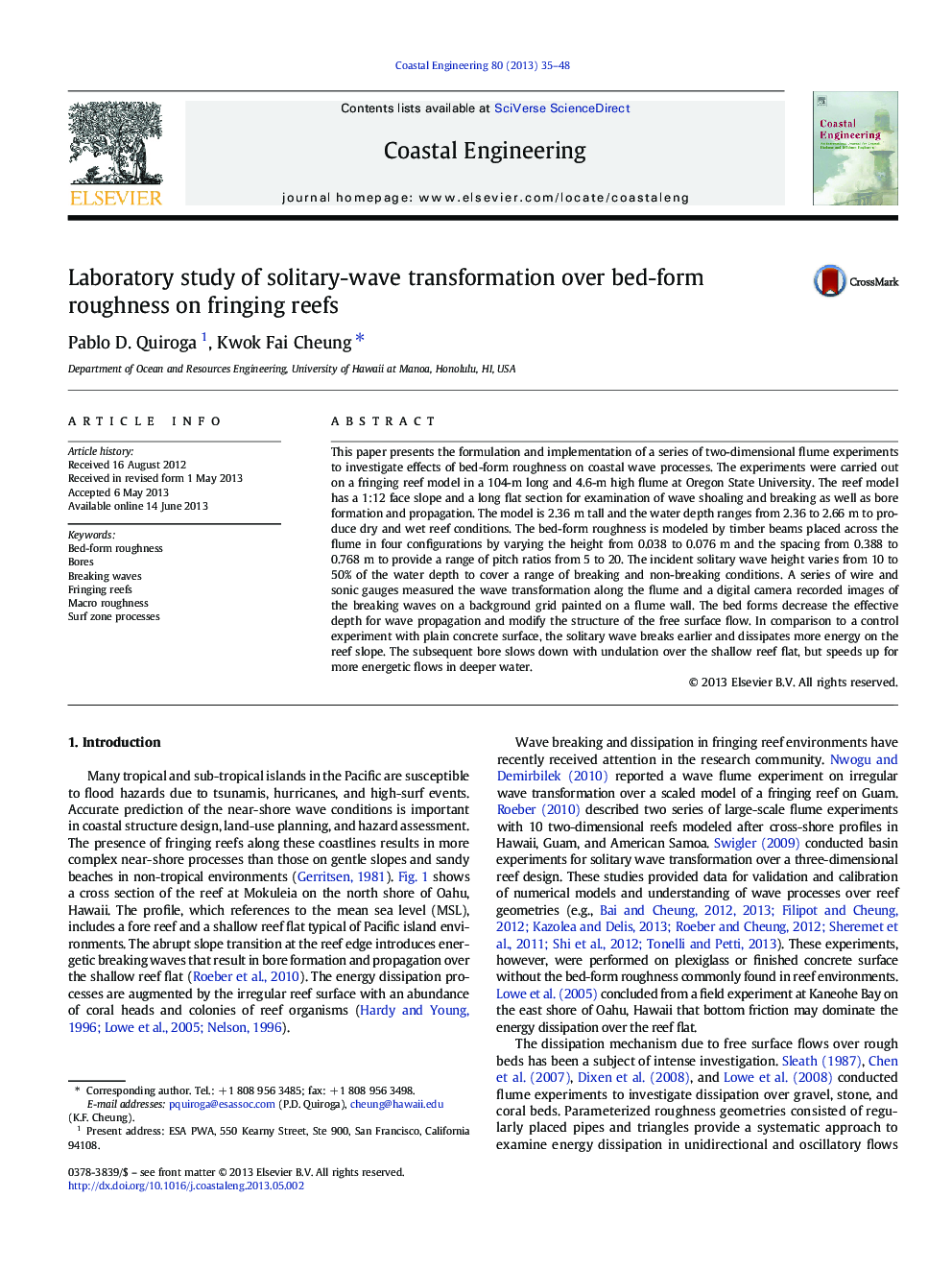| Article ID | Journal | Published Year | Pages | File Type |
|---|---|---|---|---|
| 8059899 | Coastal Engineering | 2013 | 14 Pages |
Abstract
This paper presents the formulation and implementation of a series of two-dimensional flume experiments to investigate effects of bed-form roughness on coastal wave processes. The experiments were carried out on a fringing reef model in a 104-m long and 4.6-m high flume at Oregon State University. The reef model has a 1:12 face slope and a long flat section for examination of wave shoaling and breaking as well as bore formation and propagation. The model is 2.36Â m tall and the water depth ranges from 2.36 to 2.66Â m to produce dry and wet reef conditions. The bed-form roughness is modeled by timber beams placed across the flume in four configurations by varying the height from 0.038 to 0.076Â m and the spacing from 0.388 to 0.768Â m to provide a range of pitch ratios from 5 to 20. The incident solitary wave height varies from 10 to 50% of the water depth to cover a range of breaking and non-breaking conditions. A series of wire and sonic gauges measured the wave transformation along the flume and a digital camera recorded images of the breaking waves on a background grid painted on a flume wall. The bed forms decrease the effective depth for wave propagation and modify the structure of the free surface flow. In comparison to a control experiment with plain concrete surface, the solitary wave breaks earlier and dissipates more energy on the reef slope. The subsequent bore slows down with undulation over the shallow reef flat, but speeds up for more energetic flows in deeper water.
Related Topics
Physical Sciences and Engineering
Engineering
Ocean Engineering
Authors
Pablo D. Quiroga, Kwok Fai Cheung,
